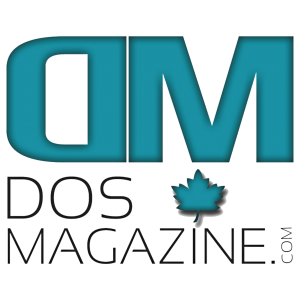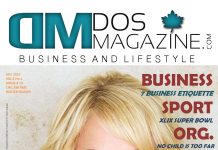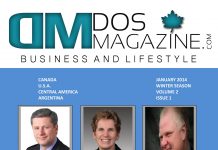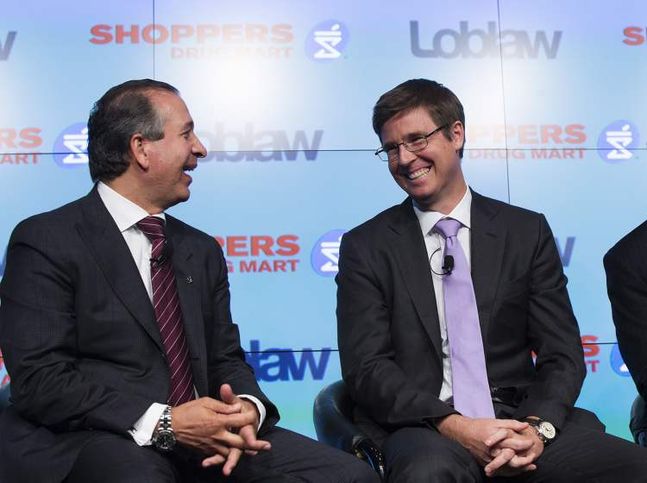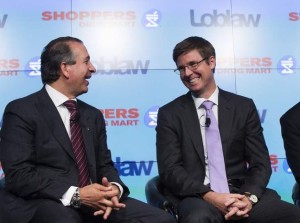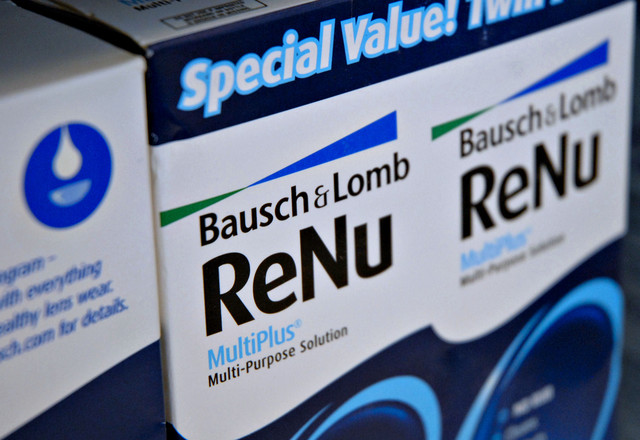Canadian grocer Loblaw Cos. agreed to buy Shoppers Drug Mart Corp. for 12.4 billion Canadian dollars ($11.93 billion) in a cash-and-stock deal that marries two of Canada’s biggest and best-known retail brands.
Galen G. Weston, executive chairman of Loblaw Cos., shaking hands with Holger Kluge, chairman of Shoppers Drug Mart, on Monday.
The move gives Loblaw—a 95-year-old grocery giant controlled by one of Canada’s wealthiest families—a foothold in smaller, urban markets across Canada. That may help it lure city dwellers in for more frequent, if smaller, grocery runs as it fends off competition from big discounters and new niche players.
The deal is the biggest and latest in a series of large consolidations in the grocery business in both the U.S. and Canada. Earlier this month, Kroger Co. KR -0.10% said it would buy Harris Teeter Supermarkets Inc. HTSI -0.04% for $2.44 billion. Canadian giant Empire Co. last month agreed to buy Safeway Inc.’s SWY +0.27% Canadian operations for about $5.68 billion.
Big Canadian chains such as Loblaw, Canada’s biggest grocer by revenue, have been fighting off price competition from the likes of Wal-Mart Stores Inc. WMT +0.15% and other discounters, who have ramped up efforts to sell everything from eggs and milk to prescription drugs,targeting middle-market consumers. Meanwhile, niche players like Whole Foods Market Inc. WFM -0.13% are biting into grocery sales for high-end, health-focused andspecialty products.
Shoppers is Canada’s biggest drug-store chain by revenue. Its ubiquitous outlets dot the urban downtown core of Toronto and other big cities, as well as anchoring small strip malls across Canada’s suburbs and smaller towns.
Loblaw said it would boost the chain’s food offerings as a way of tapping these smaller, neighborhood markets. In addition to keeping its focus on drawing shoppers for their once- or twice-a-week grocery haul, Loblaw is also increasingly targeting those busy shoppers, pressed for time who make more frequent, but smaller, trips to the grocery.
In May, Loblaw opened a small-format store in Calgary under its No Frills banner, part of a pilot program aimed at competing for urban customers who want to shop close to home.
“With this deal, Loblaw has gone out and bought a leadership position in that small, urban evolutionary market,” said Kenric Tyghe, consumer and retail analyst at Raymond James Canada.
In a call with investors on Monday, Loblaw President Vicente Trius said the deal “catapults us into a position that would otherwise take decades to reach alone.”
The deal also gives Loblaw a big opening in pharmacy sales. Shoppers Drug fills about 25 million prescriptions per year, for about 25% of the Canadian market share, according to Loblaw. Loblaw’s own pharmacies account for about 5% of the market share.
Loblaw also said Monday its controlling shareholder George Weston Ltd., WN.T +0.31% the holding company of the Weston family, agreed to buy C$500 million of additional Loblaw shares at Friday closing price. After the investment and deal’s closing, Weston will own a roughly 46% stake in Loblaw, lowering its stake from 63% before the deal.
The Westons started their food-processing, distribution and retail empire as a single grocery in Toronto, in 1919. The family also controls two of the world’s best-known, high-end department stores, Canada’s Holt Renfrew and Britain’s Selfridges Group.
The deal is slated to close in about seven months, subject to regulatory hurdles in Canada, including a review from the country’s Competition Bureau. The agency declined to comment.
Loblaw will pay Shoppers Drug shareholders a per-share price of C$33.18 in cash plus roughly 0.6 Loblaw shares per Shoppers Drug share.
The total consideration will consist of 53.9% cash and 46.1% stock. The maximum amount of cash to be paid by Loblaw will be about C$6.7 billion and the maximum number of Loblaw shares to be issued will be about 119.9 million. Shoppers Drug Mart shareholders will own about 29% of the combined company. By KAREN JOHNSON CONNECT-WSJ
